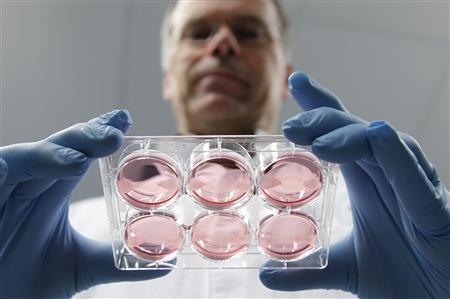In the future, and not too far in it, genetically modified foods and in vitro ones will be our best hope, perhaps our only hope. The opening of a New York Times article by Henry Fountain about a hamburger “born” of beef-muscle tissue grown in a Dutch lab, a project I blogged about nearly a year ago:
“MAASTRICHT, the Netherlands — As a gastronomic delicacy, the five-ounce hamburger that Mark Post has painstakingly created here surely will not turn any heads. But Dr. Post is hoping that it will change some minds.
The hamburger, assembled from tiny bits of beef muscle tissue grown in a laboratory and to be cooked and eaten at an event in London, perhaps in a few weeks, is meant to show the world — including potential sources of research funds — that so-called in-Vitro meat, or cultured meat, is a reality.
‘Let’s make a proof of concept, and change the discussion from ‘this is never going to work’ to, ‘well, we actually showed that it works, but now we need to get funding and work on it,’ Dr. Post said in an interview last fall in his office at Maastricht University.
Down the hall, in a lab with incubators filled with clear plastic containers holding a pinkish liquid, a technician was tending to the delicate task of growing the tens of billions of cells needed to make the burger, starting with a particular type of cell removed from cow necks obtained at a slaughterhouse.”

